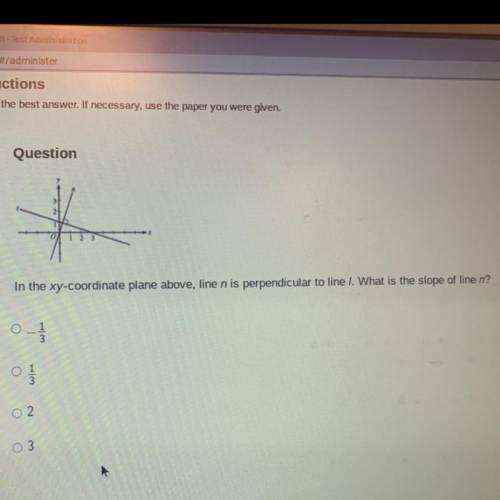
Mathematics, 12.05.2021 19:20 fabiolafrancklin10
In the cyan-coordinate plane above, line N is perpendicular to line L. What is the slope of line N?


Answers: 1
Another question on Mathematics

Mathematics, 21.06.2019 15:00
Hye ryung is the president of the local chapter of the american medical students association (amsa). she is organizing local outreach and informational meetings. at her first meeting there are five people present (including herself). every month after that her group grows by 5 people. a. how many members are in the group after 6 months? b. the logistics of hosting and feeding her group at meetings was more complicated than expected. the cost of feeding 5 people at her first meeting was $30, for 10 people it was $35, for 15 it was $45, and after 6 months all of the costs had added up to $100. write a function to model the cost with the number of people attending meetings. c. what connections can you make between the linear growth of the group’s membership and the increasing costs of running meetings?
Answers: 3

Mathematics, 21.06.2019 15:20
Asmall (but heavy) particle placed in a glass of water will follow a zigzag motion because the particle will bounce off of the water molecules it meets. this is called brownian motion. a physicist simulates this on a computer, by varying the distance a particle can travel (called the mean free length), on average, before it collides with a water molecule and assigning the change in motion to be one of 8 directions, each with a similar probability. by running the simulated particle (with the same mean free length) many times she determines that it should take 15 seconds, on average, for the particle to fall to the bottom, with a standard deviation of 1.5 seconds. next she lets a real particle fall through a glass of water and finds that it took 18 seconds. what does she conclude, and why?
Answers: 1

Mathematics, 21.06.2019 16:50
The rate of decay of a radioactive substance depends upon the amount present initially. the mass y (mg) of the radioactive substance cobalt-60 present in a sample at time t (years) is represented by the exponential equation y=50e −0.1315 t . answer the following questions in complete sentences. 1. how does the exponential equation above compare to the equation for simple interest that is compounded continuously? explain the similarities. 2. what is the initial amount of cobalt-60 in the sample? 2. how much cobalt-60 is left after 8.4 years? show your work. 3. what would be the y-intercept of the graph? what does it represent? 4. after how many years will the amount of cobalt-60 left be 6.25 mg? explain what happens to the cobalt-60 after 50 years? 5. discuss some “real-world” examples and uses of cobalt-60
Answers: 1

You know the right answer?
In the cyan-coordinate plane above, line N is perpendicular to line L. What is the slope of line N?...
Questions

History, 28.01.2021 16:40



Chemistry, 28.01.2021 16:40


Mathematics, 28.01.2021 16:40

Biology, 28.01.2021 16:40

Mathematics, 28.01.2021 16:40

History, 28.01.2021 16:40



Mathematics, 28.01.2021 16:40


Mathematics, 28.01.2021 16:40


Mathematics, 28.01.2021 16:40

Mathematics, 28.01.2021 16:40



Social Studies, 28.01.2021 16:40



